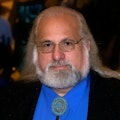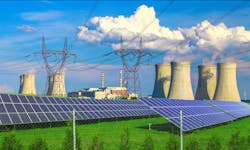Data Centers Take Note: NRC Meets with FERC, NERC on Future of Nuclear Power
The last full week in January saw the date for the most recent meeting between the Nuclear Regulatory Commission (NRC) and the Federal Energy Regulatory Commission (FERC), with a guest appearance by the North American Electric Reliability Corporation (NERC).
As a sector with a more than vested interest in the state of power generation, distribution and reliability within the United States, much of the discussion should have the ear of the data center industry.
Identifying the Players
Responsible for the commercial use of nuclear power and nuclear materials within the United States, the NRC probably has the highest profile when the discussion turns to the future of energy production. Since almost nothing in the nuclear power generation business can happen without the approval and oversight of the NRC, the impact of this agency can’t be understated.
Its mandate is to ensure the safe civilian use of nuclear materials while protecting people and the environment, and much of the regulatory aspect is focused on the protection part. The agency is also responsible for other aspects of nuclear materials in civilian applications, such as much less controversial nuclear medicine technologies.
FERC is the agency that regulates interstate transmission of electricity, natural gas, and oil.
The source of the energy being transmitted is not within the purview of the agency, so they are not involved in the approval or construction process regulating nuclear power plants, for example. In some cases, however, the types of activities under review do overlap with similar activities with other agencies.
Siting applications for electric transmission fall under their purview; and obviously, the construction of power generation facilities requiring electrical transmission capabilities.
Regardless of the type of power generation, FERC is responsible for protecting the reliability of the high-voltage interstate transmission system through the implementation of mandatory reliability standards. They also continually monitor, and if necessary, investigate the energy marketplace.
Unlike the other two organizations, NERC is not a government entity; it is rather a not-for-profit international regulatory authority. The focus of NERC is to assure the effective and efficient reduction of risks to the reliability and security of the power grid with a focus on North America, including Canada, U.S., Mexico.
The NERC is tasked with developing standards, monitoring long-range power transmission, looking at system reliability and several related tasks, while also maintaining training and certification programs for personnel in the industry.
What Are the Key Takeaways for Data Centers?
Since power availability is one of the critical decision paths for the industry, the fact that almost 20% of the nation's nuclear reactors (16 of 93) currently have life extension applications in with the NRC for review is important to note.
While life extension applications have been business as usual for nuclear power plants, the current political climate has been warring with the need to boost power generation, and unlike days past, the power generation side is winning the arguments.
Most obviously, California’s last nuclear power plant, Diablo Canyon, the 2.5 GW facility slated to close next year, just received a $1.1 billion grant from the government to keep the plant operational through 2030.
This grant is separate from the 20 -year license extension that Pacific Gas & Electric has submitted. Which, they point out, simply leaves the option open, as the state could still decide to shut the plant down.
As reported in Utility Dive, FERC Commissioner Mark Christie pointed out that, “Even though a lot of politicians in California wanted to close it, they faced the reality that they could not close it and keep their lights on, so one lesson there was: ultimately, reality wins.”
The Future of Nuclear Power Generation
Regarding the future of nuclear power generation, the NRC stated that they expected to see no fewer than 25 license applications for SMR and advanced reactors by 2029.
No comment was made on the current product cycle (from approval to power generation), but the SMR industry continually focuses on a much shorter time-to-market than current nuclear power generation stations, when the SMRs are being manufactured as planned. Estimates are for a potential 90 GW of energy generation with the average SMR being a 200 MW unit.
The NERC took the recent meeting as the opportunity to release their 2023 Long-Term Reliability Assessment overview which includes a 10-year assessment of resource capacity and energy risks.
Of the included discussion, NERC expects 83 GW of fossil fuel and nuclear power capacity to be retired by the end of 2033, replaced by 117 GW of renewables, in the form of 62 GW of solar, 29 GW of gas, 21 GW of batteries and 5 GW of wind.
While this is a net gain of 34 GW capacity, the ability for renewable sources to deliver their rated capacity still has issues, and future deployments will require being able to address the power generation uncertainties in the energy supply.
One of the keys to addressing the uncertainty of availability from any given source is the ability to move energy transmission, effectively on the fly, from where it is being created to where it is needed, as well as a more significant investment in energy storage capability.
It should also be noted that these estimates for future power generation do not include new nuclear power generation sources.
The entire two- and half-hour joint meeting of the Nuclear Regulatory Commission and FERC 2024 is available on YouTube, should you care to sit in:
While you may not have the time needed to sit through the entire joint meeting, the long-term reliability report is only 12 pages of presentation materials and provides a very clear view of the future needs of power generation in North America.
Keep pace with the fast-moving world of data centers and cloud computing by connecting with Data Center Frontier on LinkedIn, following us on X/Twitter and Facebook, and signing up for our weekly newsletters using the form below.
About the Author



